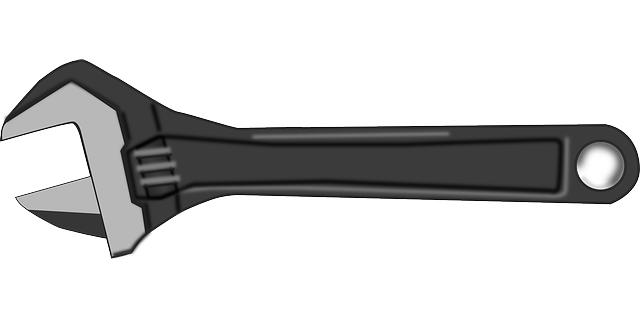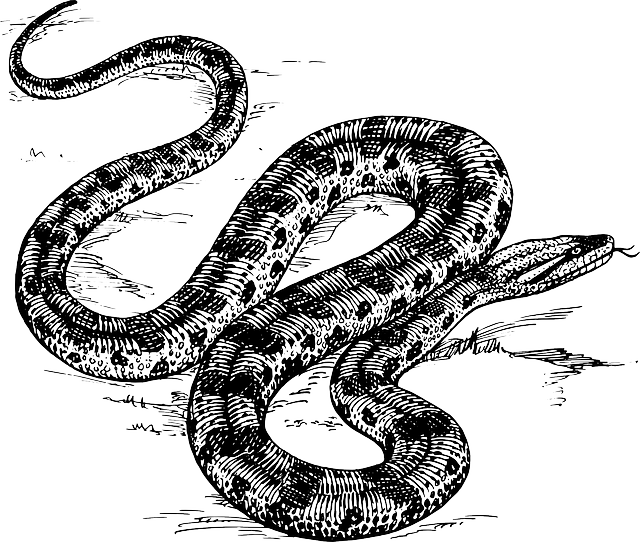نظام سواتل ملاحة عالمي
أنظمة سواتل الملاحة العالمية (GNSS)، هي المصطلح العام لأنظمة السواتل الملاحية والتي تقوم بإعطاء معلومات عن المواقع الجغرافية على النطاق العالمي. وتسمح هذه الأنظمة للمسtime signals transmitted along a line-of-sight]] by radio from satellitesتقبلات الال precise timeكترونية بتحديد احداثيات المسقط؛ الطول، العرض، والارتفاع في حدود بضعة أمتار مستخدمة time signals transmitted along a line-of-sight عن طريق الراديومن خلال السواتل.
ويمكن استعمال المستقبلات الأرضية في هذه النظم، والتي لديها القدرة على تحديد المسقط وكذلك أيضا على حساب الوقت بدقة كمرجع للتجارب الفهمية.
في 2009، يعتبر نظام التمسقط العالمي (GPS) الولايات المتحدة|الأمريكي هونظام التشغيل الكامل الوحيد في أنظمة السواتل الملاحية العالمية. وتعمل روسيا على تطوير نظامها گلوناس لجعله تحت التشغيل الكامل. وقام الاتحاد الاوروبي بانشاء نظام گاليليوللتمسقط ولكنه مازال في فترة التطوير، ومن المتسقط حتى يبدأت تشغيله في 2013. تعمل الصين على توسيع نظام التشغيل الاقليمي نظام بيدوالملاحي ليصبح نظاما عالمي تحت اسم نظام الملاحة كومپاس|كومپاس بحلول 2015.
تتم التغطية عن طريق مجموعة من سواتل المدارات الأرضية المتوسطة MEO الموجودة في الأسطح المدارية المتنوعة. تقوم النظم العملية باستخدام توجهات مدارية >50° وفترة مدارية|فترات مدارية على مدار 12 ساعة (بارتفاع 20.200 كم).
تصنيف أنظمة السواتل الملاحية العالمية
GNSS that provide enhanced accuracy and integrity monitoring usable for civil navigation are classified as follows:
- GNSS-1 is the first generation system and is the combination of existing satellite navigation systems (GPS and GLONASS), with Satellite Based Augmentation Systems (SBAS) or Ground Based Augmentation Systems (GBAS). In the United States, the satellite based component is the Wide Area Augmentation System (WAAS), in Europe it is the European Geostationary Navigation Overlay Service (EGNOS), and in Japan it is the Multi-Functional Satellite Augmentation System (MSAS). Ground based augmentation is provided by systems like the Local Area Augmentation System (LAAS).
- GNSS-2 is the second generation of systems that independently provides a full civilian satellite navigation system, exemplified by the European Galileo positioning system. These systems will provide the accuracy and integrity monitoring necessary for civil navigation. This system consists of L1 and L2 frequencies for civil use and L5 for system integrity. Development is also in progress to provide GPS with civil use L2 and L5 frequencies, making it a GNSS-2 system.¹[بحاجة لمصدر]
- Core Satellite navigation systems, currently GPS, Galileo and GLONASS.
- Global Satellite Based Augmentation Systems (SBAS) such as Omnistar and StarFire.
- Regional SBAS including WAAS(الولايات المتحدة), اگنوس (الاتحاد الاوروبي), MSAS (اليابان) وگاگان (الهند).
- أنظمة سواتل الملاحة الاقليمية مثل QZSS (اليابان), نظام السواتل الملاحية الإقليمي الهندي (الهند) وبيدو(الصين).
- Continental scale Ground Based Augmentation Systems (GBAS) for example the Australian GRAS and the US Department of Transportation National Differential GPS (DGPS) service.
- Regional scale GBAS such as CORS networks.
- Local GBAS typified by a single GPS reference station operating Real Time Kinematic (RTK) corrections.
التاريخ والنظريات
Early predecessors were the ground based DECCA, LORAN and Omega systems, which used terrestrial longwave radio transmitters instead of satellites. These positioning systems broadcast a radio pulse from a known "master" location, followed by repeated pulses from a number of "slave" stations. The delay between the reception and sending of the signal at the slaves was carefully controlled, allowing the receivers to compare the delay between reception and the delay between sending. From this the distance to each of the slaves could be determined, providing a fix.
The first satellite navigation system was Transit, a system deployed by the US military in the 1960s. Transit's operation was based on the Doppler effect: the satellites traveled on well-known paths and broadcast their signals on a well known frequency. The received frequency will differ slightly from the broadcast frequency because of the movement of the satellite with respect to the receiver. By monitoring this frequency shift over a short time interval, the receiver can determine its location to one side or the other of the satellite, and several such measurements combined with a precise knowledge of the satellite's orbit can fix a particular position.
Part of an orbiting satellite's broadcast included its precise orbital data. In order to ensure accuracy, the US Naval Observatory (USNO) continuously observed the precise orbits of these satellites. As a satellite's orbit deviated, the USNO would send the updated information to the satellite. Subsequent broadcasts from an updated satellite would contain the most recent accurate information about its orbit.
Modern systems are more direct. The satellite broadcasts a signal that contains orbital data (from which the position of the satellite can be calculated) and the precise time the signal was transmitted. The orbital data is transmitted in a data message that is superimposed on a code that serves as a timing reference. The satellite uses an atomic clock to maintain synchronization of all the satellites in the constellation. The receiver compares the time of broadcast encoded in the transmission with the time of reception measured by an internal clock, thereby measuring the time-of-flight to the satellite. Several such measurements can be made at the same time to different satellites, allowing a continual fix to be generated in real time.
Each distance measurement, regardless of the system being used, places the receiver on a spherical shell at the measured distance from the broadcaster. By taking several such measurements and then looking for a point where they meet, a fix is generated. However, in the case of fast-moving receivers, the position of the signal moves as signals are received from several satellites. In addition, the radio signals slow slightly as they pass through the ionosphere, and this slowing varies with the receiver's angle to the satellite, because that changes the distance through the ionosphere. The basic computation thus attempts to find the shortest directed line tangent to four oblate spherical shells centered on four satellites. Satellite navigation receivers reduce errors by using combinations of signals from multiple satellites and multiple correlators, and then using techniques such as Kalman filtering to combine the noisy, partial, and constantly changing data into a single estimate for position, time, and velocity.
الاستخدامات المدنية والعسكرية
The original motivation for satellite navigation was for military applications. Satellite navigation allows for hitherto impossible precision in the delivery of weapons to targets, greatly increasing their lethality whilst reducing inadvertent casualties from mis-directed weapons. (See smart bomb). Satellite navigation also allows forces to be directed and to locate themselves more easily, reducing the fog of war.
In these ways, satellite navigation can be regarded as a force multiplier. In particular, the ability to reduce unintended casualties has particular advantages for wars where public relations is an important aspect of warfare. For these reasons, a satellite navigation system is an essential asset for any aspiring military power. [بحاجة لمصدر]
GNSS systems have a wide variety of uses:
- Navigation, ranging from personal hand-held devices for hiking, to devices fitted to cars, trucks, ships and aircraft
- Time transfer and synchronization
- Location-based services such as enhanced 911
- Surveying
- إدخال البيانات إلى نظام المعلومات الجغرافي
- البحث والانقاذ
- العلوم الجيوفيزيائية
- أجهزة التتبع المستخدمة في إدارة الحياة البرية.
- أنظمة التتبع، كما في إدارة أسطول الشاحنات.
- Road Pricing
- Location-based media
يجب ملاحظة حتى القدرة على اختيار اشارات الساتل الملاحي تكون مساوية للقدرة على رفض نفس الاشارات. لدى مشغل نظام الساتل الملاحي القدرة على الحد من أوتوقيف خدمات السواتل الملاحية في أي منطقة يرغب فيها.
أنظمة السواتل الملاحية الحالية
العاملة بالعمل
نظام التسقط العالمي GPS
نظام تحديد المواقع العالمي، هو (GNSS) الوحيد الذي تعمل كافة وظائفه. ويستخدم كوكبة من ما لا يقل عن 24 [ساتل] ذوي مدار أرضي متوسط ينقلون اشارات ميكروويڤ دقيقة، النظام يمكـّن مستقبل ن ت ع GPS من تحديد مسقطه، سرعته, اتجاهه، والوقت.
گلوناس
گلوناس هو (GNSS)، تم تطويره من قبل الاتحاد السوفيتي السابق، وتديره الآن حكومة روسيا|الحكومة الروسية عن طريق قوات الفضاء الروسية.
بدأ تطوير گلوناس في 1976، بهدف التغطية العالمية بحلول 1991. في في 12 اكتوبر 1982، تم إطلاق أعداد من الصواريخ لتضاف لسواتل النظام حتى اكتملت المجموعة في 1995. بعد الانتهاء من الفترة، سرعان ما سقط النظام بسبب الانهيار الذي الم بالاقتصاد الروسي.
في بداية 2001، عادت روسيا للعمل على تطوير النظام مرة أخرى، وفي السنوات الأخيرة تقدمت الحكومة الهندية بعرض شراكة في النظام، ومن المتسقط حتى يبدأت العمل بالنظام على النطاق العالمي بحلول 2009.
گاليليو
The European Union and European Space Agency agreed in March 2002 to introduce their own alternative to GPS, called the Galileo positioning system. Galileo became operational on 15 December 2016 (global Early Operational Capability (EOC)) At an estimated cost of EUR 3.0 billion, the system of 30 MEO satellites was originally scheduled to be operational in 2010. The original year to become operational was 2014. The first experimental satellite was launched on 28 December 2005. Galileo is expected to be compatible with the modernized GPS system. The receivers will be able to combine the signals from both Galileo and GPS satellites to greatly increase the accuracy. Galileo is expected to be in full service in 2020 and at a substantially higher cost. The main modulation used in Galileo Open Service signal is the Composite Binary Offset Carrier (CBOC) modulation.
قيد التطوير
BeiDou-2
China has indicated they plan to complete the entire second generation Beidou Navigation Satellite System (BDS or BeiDou-2, formerly known as COMPASS), by expanding current regional (Asia-Pacific) service into global coverage by 2020. The BeiDou-2 system is proposed to consist of 30 MEO satellites and five geostationary satellites. A 16-satellite regional version (covering Asia and Pacific area) was completed by December 2012.
نظم سواتل ملاحة مقترحة
گاليليو
گاليليو(GNSS)، هو (GNSS) تحت الإنشاء، يقوم ببنائه الاتحاد الاوروپي ووكالة الفضاء الاورپية. وتصل تكلفة النظام إلى 3.4 بليون يورو، وهوبديل وممثال لنظام تحديد المواقع العالمي (GPS) الأمريكي والنظام الروسي گلوناس GLONASS (المتسقط عودته للعمل في 2009)، الصيني المقترح، ونظام السواتل الملاحية الإقليمي الهندي IRNSS. في 30 نوفمبر 2007، توصل وزراء النقل والمواصلات في دول الاتحاد الاوروبي إلى اتفاقية ضرورة عمل النظام بحلول 2013.
عند بدء النظام في العمل، يجب حتىقد يكون هناك مركزان أرضيان للعمليات، أحدهما بالقرب من ميونخ، ألمانيا، والآخر في فوتشينو، 130 كم شرق روما، ايطاليا. منذ 18 مايو2007، بناء على توصية مفوض النقل جاك باروت، أخذ الاتحاد الاوربي الإدارة المباشرة لمشروع گاليليومن مجموعة من ثمانية شركات خاصة تسمى الصناعات للسواتل الملاحية الاوروبية، والتي هجرت المشروع في أوائل 2007.
كومپاس
نظام كومپاس (ويعهد أيضا باسم بيدو-2)، هومشروع صيني لإنشاء (GNSS) عالمي مستقل. وهوليس إمتداد للمشروع السابق بيدو-1.
مقارنة بين أنظمة السواتل الملاحية
| صورة | النظام | البلد | التكويد | تاريخ الإطلاق | عدد الأقمار | التكلفة السنوية | الارتفاع والدورة المدارية | عدد السواتل | الحالة |
|---|---|---|---|---|---|---|---|---|---|
| نظام التمسقط العالمي |
|
CDMA | 1983 | 24 | 750 م. $ | 22,200 كم، 12.0 س | ≥ 24 | يعمل | |
| گلوناس | روسيا | FDMA | 1993 | 17 | 380 م. $ | 19,100 كم، 11.3 س | يعمل بقيود، يتم تحضير CDMA | ||
| گاليليو | الاتحاد الاوروبي | CDMA | 2012 | 30 | 4.2 م. $ | 23,222 كم، 14.1 س | ≥ 27 | في فترة التحضير | |
| كومپاس | الصين | CDMA | 2003 | 4 | 787 م. $ | 21,150 كم، 12.6 س | في فترة التحضير | ||
| Quasi Zenith Satellite System | اليابان | 3 | 21,150 كم، 12.6 س | في فترة التحضير | |||||
| نظام السواتل الملاحية الإقليمي الهندي | الهند | منظمة أبحاث الفضاء الهندي | 2012 | 4 | م. $ | في فترة التحضير |
أنظمة السواتل الملاحية الاقليمية الأخرى
بيدو-1
هوشبكة اقليمية صينية يتم العمل على تطويرها حاليا تحت اسم نظام كومپاس الملاحي|كومپاس.
دوريس
Doppler Orbitography and Radio-positioning Integrated by Satellite (DORIS) is a French precision navigation system.
نظام السواتل الملاحية الإقليمي الهندي
نظام السواتل الملاحية الإقليمي الهندي (IRNSS)، هونظام سواتل ملاحي اقليمي تم تطويره من قبل منظمة أبحاث الفضاء الهندية والتي تعمل بالكامل تحت إدارة الحكومة الهندية. وظهرت الحاجة لهذا النوع من أنظمة الملاحة بعد إكتشاف حتى إمكانية استخدام نظام تحديد المواقع العالمي ليست مضمونة إذا ما وقع أي خلافات سياسة أوحروب.
QZSS
The Quasi-Zenith Satellite System (QZSS), is a proposed three-satellite regional time transfer system and enhancement for GPS covering Japan. The first demonstration satellite is scheduled to be launched in 2009.
تعزيز نظام السواتل الملاحية العالمية
GNSS Augmentation involves using external information, often integrated into the calculation process, to improve the accuracy, availability, or reliability of the satellite navigation signal. There are many such systems in place and they are generally named or described based on how the GNSS sensor receives the information. Some systems transmit additional information about sources of error (such as clock drift, ephemeris, or ionospheric delay), others provide direct measurements of how much the signal was off in the past, while a third group provide additional navigational or vehicle information to be integrated in the calculation process.
Examples of augmentation systems include the Wide Area Augmentation System, the European Geostationary Navigation Overlay Service, the Multi-functional Satellite Augmentation System, Differential GPS, and Inertial Navigation Systems.
شبكات الاتصال الهاتفي على طريق سواتل المدار الأرضي المنخفض
The two current operational low Earth orbit satellite phone networks are able to track transceiver units with accuracy of a few kilometers using doppler shift calculations from the satellite. The coordinates are sent back to the transceiver unit where they can be read using AT commands or a graphical user interface. This can also be used by the gateway to enforce restrictions on geographically bound calling plans.
موضوعات متعلقة
- Differential satellite navigation
- GNSS reflectometry
- Phase-counting differential satellite navigation
- Trends within GNSS
انظر ايضا
- Differential GPS
- نظام التمسقط العالمي
- گاليليو(ساتل ملاحي)
- گلوناس
- GPS-Aided Geo-Augmented Navigation
- نظام تعزيز المساحات الوساعة
- European Geostationary Navigation Overlay Service
- GNSS reflectometry
- قائمة تقنيات الطوارئ
- Space-Integrated GPS/INS
- Receiver Autonomous Integrity Monitoring
المصادر
- ^ "A Beginner's Guide to GNSS in Europe" (PDF). IFATCA.
-
^ خطأ استشهاد: وسم
<ref>غير سليم؛ لا نص تم توفيره للمراجع المسماةNYT_article - ^ "Galileo goes live!". europa.eu. 14 December 2016.
- ^ "Boost to Galileo sat-nav system". BBC News. 25 August 2006. Retrieved 2008-06-10.
- ^ "Commission awards major contracts to make Galileo operational early 2014". 2010-01-07. Retrieved 2010-04-19.
- ^ "GIOVE-A launch News". 2005-12-28. Retrieved 2015-01-16.
-
^ خطأ استشهاد: وسم
<ref>غير سليم؛ لا نص تم توفيره للمراجع المسماةautogenerated2 -
^ خطأ استشهاد: وسم
<ref>غير سليم؛ لا نص تم توفيره للمراجع المسماةautogenerated1 - ^ BBC NEWS | Science/Nature | 'Unanimous backing' for Galileo
- ^ http://www.physorg.com/news115630526.html
- ^ "Compass due Next year". Magazine article (in English). Asian Surveying and Mapping. May 1, 2009. Retrieved 2009-05-05.CS1 maint: unrecognized language (link)
- ^ DORIS information page
- ^ India to build a constellation ofسبعة navigation satellites by 2012
- ^ "JAXA Quasi-Zenith Satellite System". JAXA. Retrieved 2009-02-22.
- ^ Globalstar GSP-1700 manual
- ^ http://www.skyhelp.net/acrobat/jan_05/Iridium%20SBD-FAQ%201-05.pdf
وصلات خارجية
معلومات حول أنظمة محددة لسواتل الملاحة العالمية
- ESA information on EGNOS
- Information on the Beidou system
- German Federal Waterways Administration Traffic Technologies Centre Information on GPS / DGPS
منظمات ذات علاقة بنظام السواتل الملاحية العالمية
- United Nations International Committee on Global Navigation Satellite Systems (ICG)
- Korean GNSS Technology Council (GTC)
- Institute of Navigation (ION) GNSS Meetings
- The International GNSS Service (IGS), formerly the International GPS Service
- International Global Navigation Satellite Systems Society Inc (IGNSS)
- International Earth Rotation and Reference Systems Service (IERS) International GNSS Service (IGS)
- National Geodetic Survey Orbits for the Global Positioning System satellites in the Global Navigation Satellite System
- UNAVCO GNSS Modernization
- Asia-Pacific Economic Cooperation (APEC) GNSS Implementation Team
- Fédération Aéronautique Internationale (FAI) GNSS Flight Recorder Approval Committee (GFAC)
مصنوعون سواتل الملاحة
- Leica Geosystems
- Sapper Oy
- Trimble
- Garmin
- TomTom
- TomTom Interactive User guide
مواقع توضيحية أوداعمة
- GPS and GLONASS Simulation (Java applet) Simulation and graphical depiction of the motion of space vehicles, including DOP computation.
- GPS Forums Discussion forums relating to GPS.
خطأ استشهاد: وسوم <ref> موجودة لمجموعة اسمها "lower-alpha"، ولكن لم يتم العثور على وسم <references group="lower-alpha"/> أوهناك وسم </ref> ناقص
















